10 Actions to Make AI More Female
You don’t have to be a coder or AI researcher to help make AI more female.
There are plenty of ways everyday women—from students to small business owners, from artists to stay-at-home moms—can actively shape AI so it reflects women’s needs, values, and perspectives.
Here’s a practical list of 10 actions to make AI more female:
1. Be an Active AI User & Speak Up
- The more women use AI, the more our usage patterns and feedback influence how these tools evolve.
- Use AI for real-life needs—health tracking, career planning, creative projects—and give feedback when tools miss the mark or feel biased.
- Many AI platforms have a “feedback” button—those comments get logged and can lead to changes.
2. Share Women’s Stories and Data
- AI learns from the data it’s trained on. If women’s voices, histories, and perspectives are underrepresented online, they’ll also be underrepresented in AI outputs.
- Publish articles, blog posts, or social media content that centers women’s experiences—and make it public so AI models can “see” it.
- Participate in projects like Wikipedia editing drives for women’s biographies, which help correct data gaps in training sets.
3. Support and Signal-Boost Women in AI
- Follow and promote female AI researchers, engineers, and entrepreneurs.
- Share their work on social media, invite them as speakers, and recommend them for opportunities.
- Example: Amplifying women like Geetha Manjunath (NIRAMAI, AI for breast cancer screening) or Mira Murati Founder of Thinking Machines Lab.
Read more:
These are currently the top 10 women in the AI world
4. Join or Build Communities
- Groups like Women in AI, AI4Women, R-Ladies, and Women in Data welcome members from all backgrounds—not just tech experts.
- You can help organize meetups, mentor newcomers, or simply participate to keep the conversation active and inclusive.
5. Push for Representation Where You Work or Live
- If your company uses AI tools, ask who’s on the decision-making team. If it’s all men, suggest including diverse voices.
- In community projects, ensure women are part of any AI-related discussions—whether it’s about school tech programs, local business tools, or healthcare systems.
6. Demand Ethical & Inclusive AI
- Support organizations like the Algorithmic Justice League or AI Now Institute that fight bias and advocate for fair AI.
- When choosing AI tools, pick companies that are transparent about their ethics and diversity commitments.
7. Educate Yourself & Others
- You don’t have to be a programmer to understand AI basics.
- Take short courses (Coursera, YouTube, free webinars) and share what you learn with friends, kids, or colleagues.
- The more women understand AI, the more power we have to influence it.
8. Test AI for Bias & Report It
- When you use AI, ask it questions about women, careers, or health. If the answers feel stereotypical, incomplete, or biased, document them.
- Share these examples with the platform or post publicly to raise awareness. The more people point out bias, the more pressure companies feel to fix it.
9. Support Girls & Young Women in Tech Early
- Encourage girls to explore coding, robotics, data science, and AI from a young age.
- Volunteer at STEM events, donate to scholarships, or mentor high school and university students.
- The earlier girls see AI as “for them,” the stronger the future pipeline of female AI creators.
10. Fund & Buy From Female AI Innovators
- Choose AI tools, apps, and services founded or led by women—whether it’s a startup building health-tech or a creative AI platform.
- Your purchases, subscriptions, and reviews directly help women-led AI companies grow, attract investors, and have more influence.
Bottom line: AI becomes more “female” when women are present in the conversation, shaping the data, using the tools, and demanding better representation. You don’t have to change careers—you just need to show up, speak up, and share your perspective.
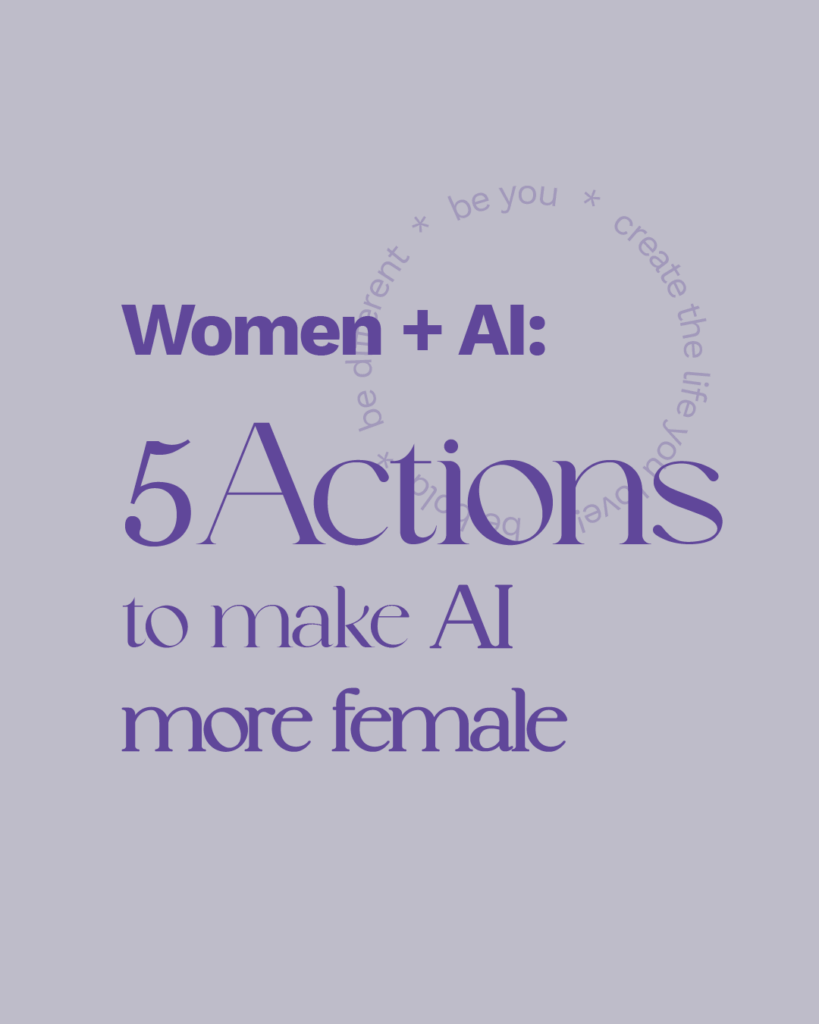
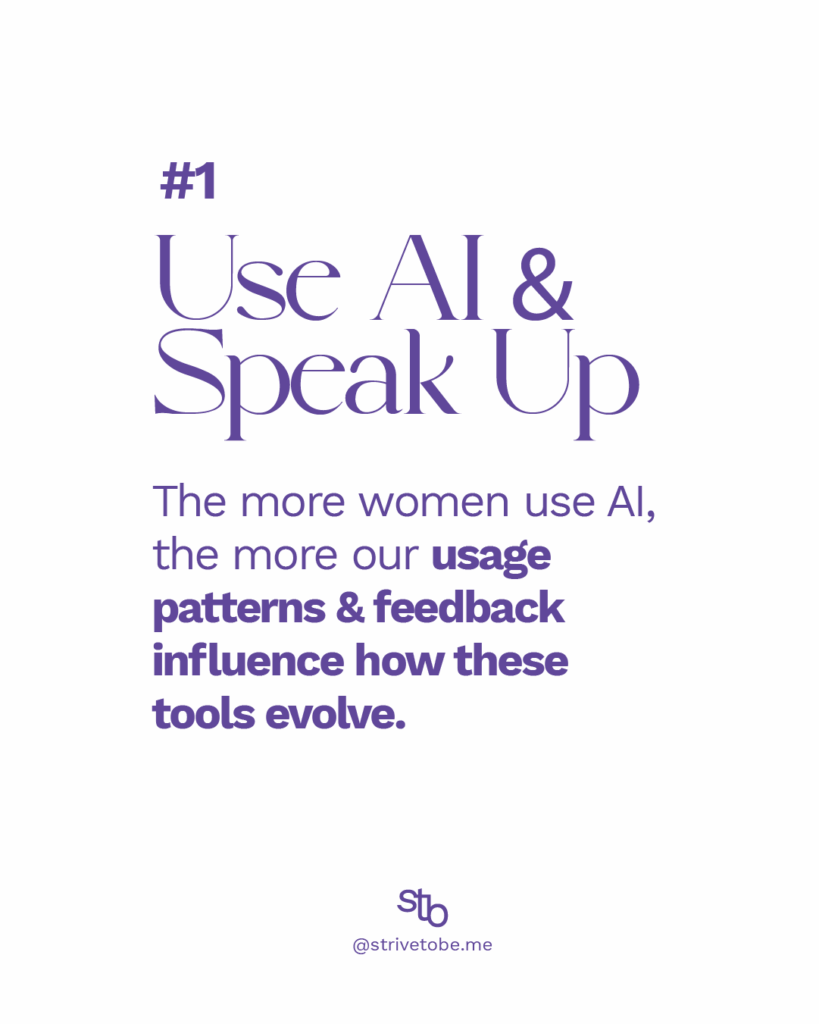
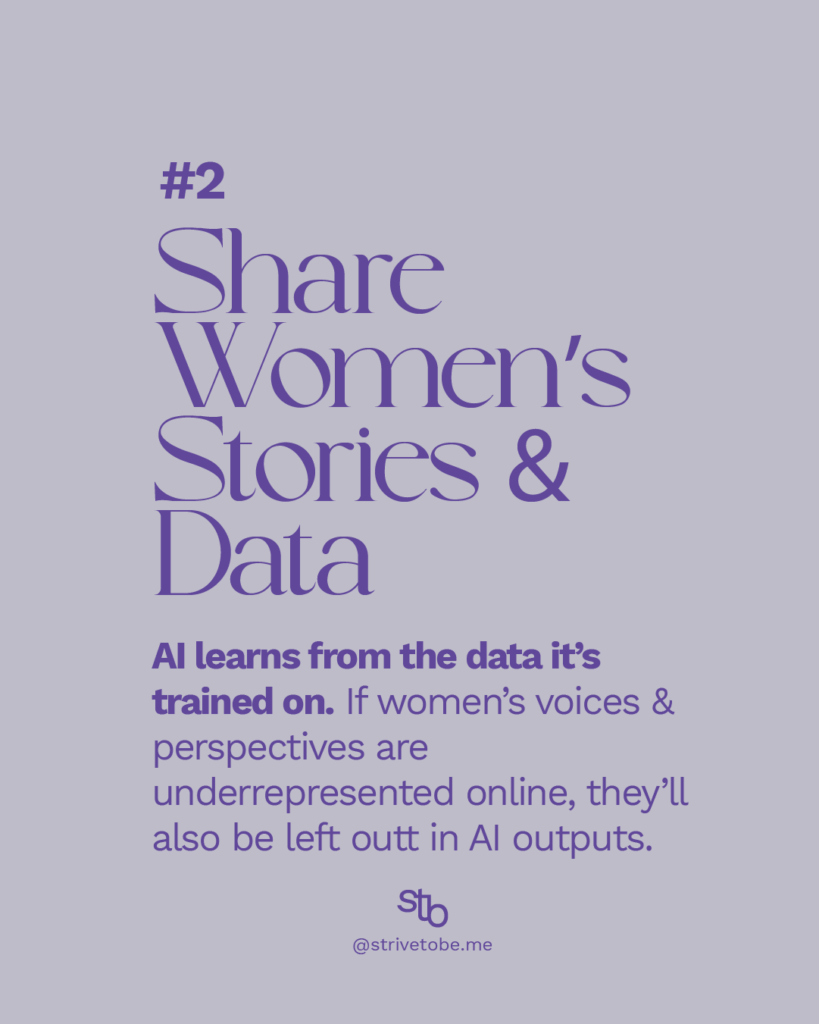
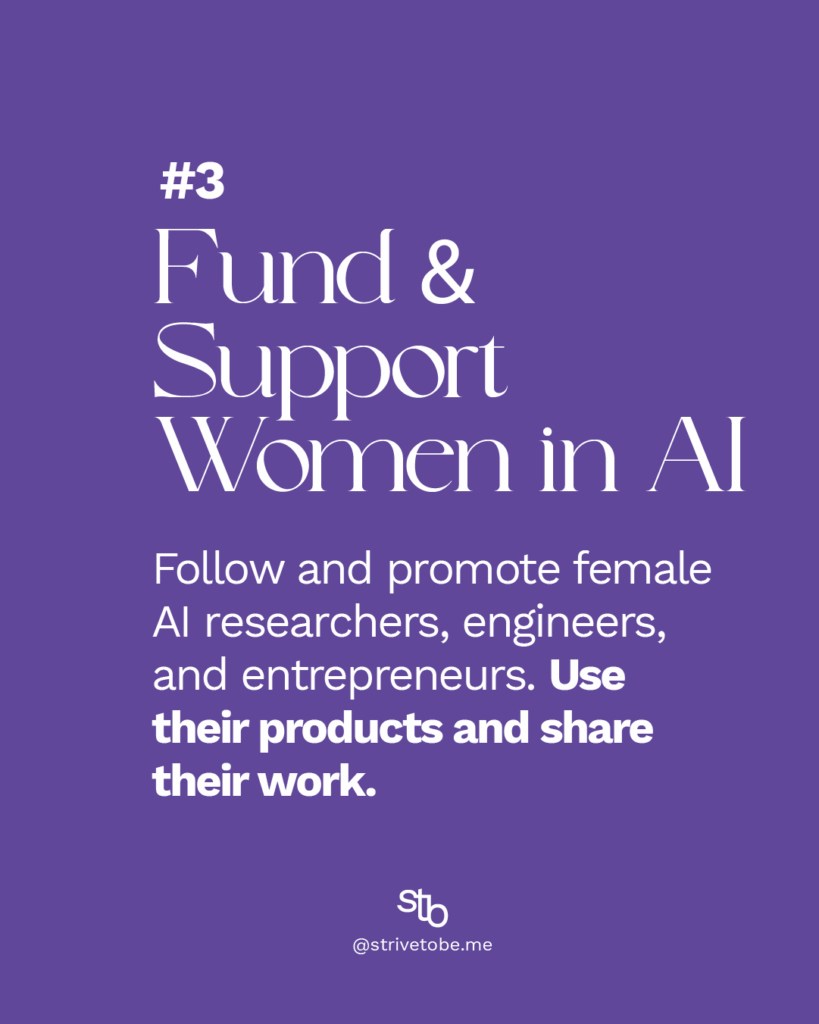

Which one will be your first action?


YOU MIGHT ALSO LIKE:
Can AI help women make their days easier?
Women are falling back on AI, here is what you can do





